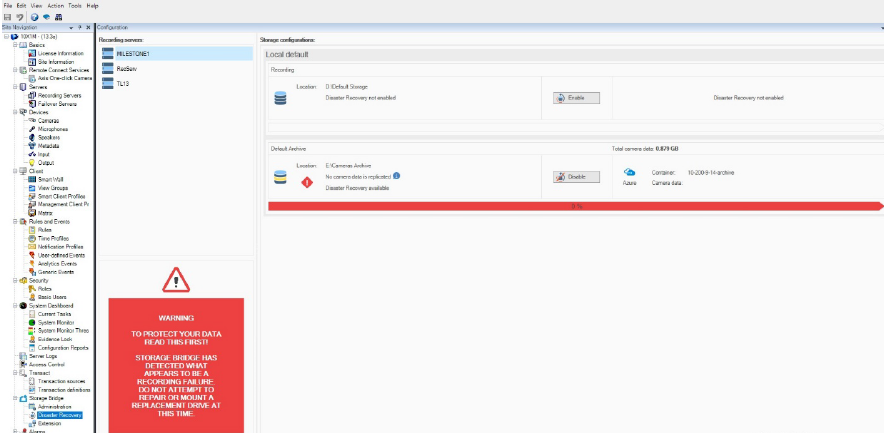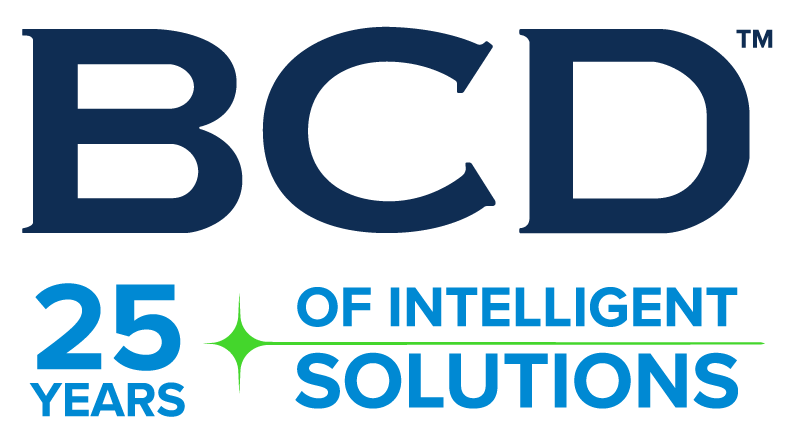By 2025, it is estimated that the world will store 200 zettabytes of data, with about half of that data stored in the cloud. There is no better time to better protect your organization from potential malicious attacks or unexpected system downtime by taking advantage of the reliable disaster recovery feature included with Harmonize Bridge.
What is Harmonize Bridge?
Harmonize Bridge, powered by Tiger Technology, allows users to store data on-premises as well as in private and public cloud platforms, all while maintaining legacy applications and workflows. Harmonize Bridge is a smart and cost-effective option for deployments that intend to expand their systems’ size. One of the many key features of Harmonize Bridge is that camera servers write video feeds to a local drive before being quickly replicated to the cloud. This buffer ensures that all data is recorded prior to being encrypted in transit to the cloud.
To add another layer of data protection, the Harmonize Bridge Disaster Recovery feature allows users to instantly detect a failure of the live or archive recording location with the Disaster Recovery Wizard. Users will easily be able to replace the failed volume with a new one.
How does the Harmonize Bridge Disaster Recovery feature work?
When Harmonize Bridge detects a failure of the Recording Server, the Disaster Recovery Wizard allows the failed recording server to be easily replaced with a standby recording server. Then the standby recording server will appear in the management server with the name of the original active one (now failed/disconnected.)


How is the Harmonize Bridge Disaster Recovery different from others?
Common disaster recovery approaches often include a third-party backup application that locks data to a specific vendor, which in many cases requires its own server and storage. Since these applications perform multiple full backups regardless of whether data has been changed, they increase write time and storage costs. In addition to higher hardware costs, data must be restored from the backup with the proprietary software it was created with, a process that delays access to data and increases vulnerability to ransomware attacks.
With Harmonize Bridge, these common pain points are eliminated. Harmonize Bridge Disaster Recovery can:
- Guard against ransomware attacks
- Supports VM backups
- Provides maximum availability and data redundancy
- Allows mission-critical processes to resume as quickly as possible.
Harmonize Bridge Disaster Recovery defends against local failure by replicating data to high-availability cloud buckets as well as hot/cool/archive tiers for both redundancy and cost flexibility even for extended retention periods. All data and files are stored in native formats with no third-party application required to write or read data, and new data is replicated as it is created. This continuous data replication removes the need for regular backups, reducing both transmission times and storage costs.
In the event of a partial data loss, users can simply access cloud data on demand and resume operation. In the case of a complete site failure, cloud data can be restored to a virgin recovery server and users can immediately begin working without downloading all data first. With Harmonize Bridge Disaster Recovery, data can be partially or fully restored to any number of new or repaired servers. Regardless of the type of failure, all data is replicated and synchronized across sources and targets.
Why choose Harmonize Bridge Disaster Recovery?
Harmonize Bridge Disaster Recovery is powered by Tiger Technology, which is the only non-proprietary, software-defined data and storage management system to blend on-premises and multi-tier, multi-cloud storage into a single space. Harmonize Bridge Disaster Recovery is transparent to users and applications, avoids vendor lock by preserving data in its native format, supports VM backups, and supports Windows services such as DFS, Active Directory, and defends against ransomware. The Harmonize Bridge Disaster Recovery feature significantly shortens both Recovery Point Objective and Recovery Time Objective to a matter of minutes, allowing mission-critical operations to resume immediately after a failure.
